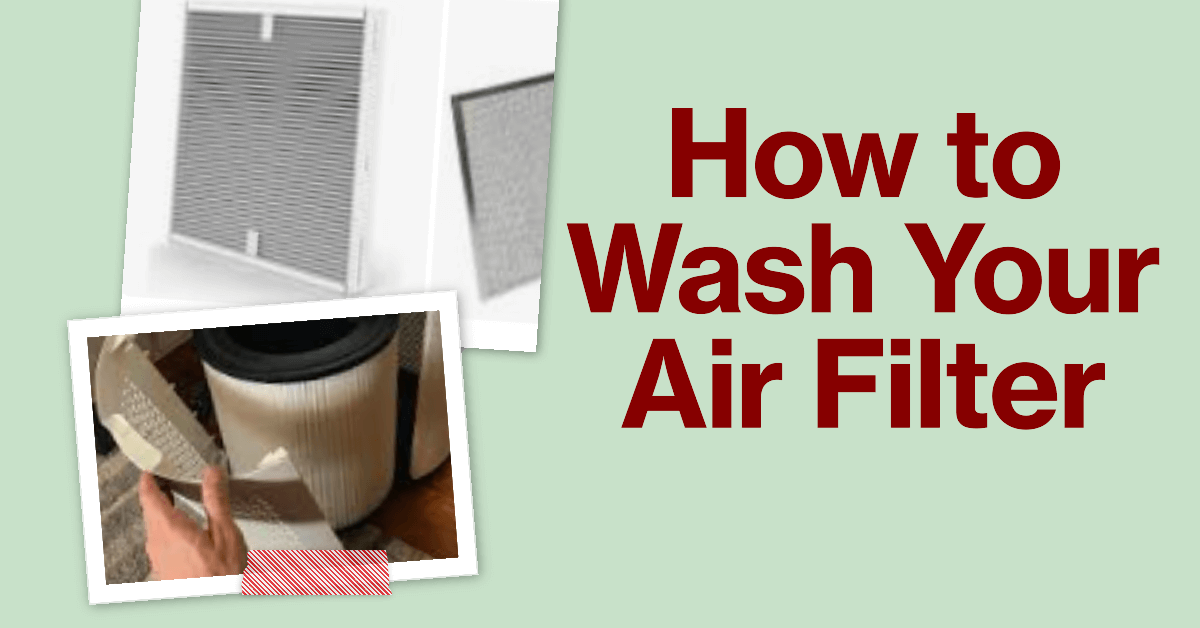How to Wash Your Air Filter is a critical aspect of maintaining a clean and healthy living environment. So the role of air filters cannot be overstated. They serve as the frontline defense against airborne impurities, from dust to allergens, ensuring the air we breathe remains fresh and safe. One essential aspect of maintaining these unsung heroes is regular cleaning – a simple yet impactful task. This guide delves into the process of washing your air filter, a practice that not only promotes better air quality but also extends the life of your filter, enhances energy efficiency and leads to cost savings. Let’s embark on this journey to learn “How to Wash Your Air Filter” and breathe easier in your home.
Before we dive into the cleaning process, it’s important to understand the types of air filters available and their crucial role in indoor air quality. Air filters come in various forms, including disposable fiberglass filters, pleated filters offering extended lifespans and eco-friendly washable filters. These filters trap particles, allergens and contaminants, preventing them from circulating in your home. By recognizing the significance of air filters, you’ll appreciate why their maintenance, especially cleaning, is vital for a healthier living space.
Now, why should you wash your air filter? The answer is simple and the benefits are substantial. Regular cleaning of your air filter prolongs its life, reducing the need for frequent replacements and minimizing environmental waste. Moreover, a clean air filter enhances energy efficiency by allowing your Air Purifier or HVAC system to operate optimally, leading to lower energy bills and a reduced carbon footprint. It also contributes to improved indoor air quality by effectively capturing and removing particles and allergens, promoting a healthier living environment. Finally, the cost savings associated with maintaining and reusing your air filter are substantial.
Understanding Air Filters
Before we dive into the process of “How to Wash Your Air Filter”, let’s get to know these silent heroes of indoor air quality. Air filters play a crucial role in maintaining a healthy living environment by trapping dust, pollen and other airborne particles. But first, let’s explore the different types of air filters.
There are several types of air filters available, each with its unique characteristics and applications. The most common types include:
| Type | Filter Material | Recommended Use |
|---|---|---|
| 1. Fiberglass Filters | Fiberglass strands | Low-cost, basic filtration |
| 2. Pleated Filters | Paper or cloth pleats | Enhanced filtration, longer lifespan |
| 3. Washable Filters | Washable material (usually foam or mesh) | Reusable, eco-friendly option |
Once you know the type of air filter you have, you’ll be better equipped to understand the cleaning and maintenance process. But why is this even important?
The role of air filters in maintaining air quality in house cannot be overstated. Clean air filters prevent allergens and pollutants from circulating in your home, making the air safer to breathe. Signs of a dirty air filter can include reduced airflow, increased energy consumption and worsened allergies.
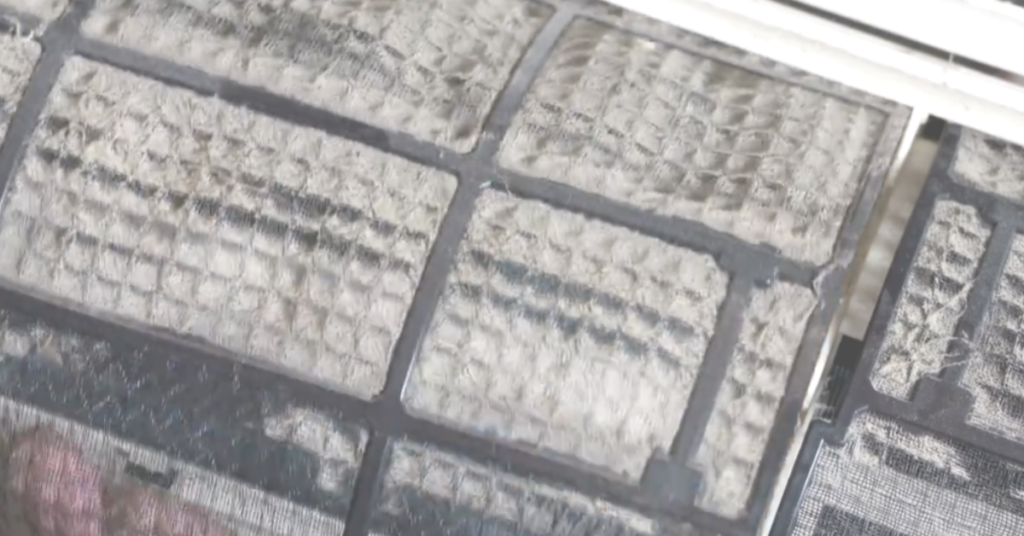
Why Washing Air Filters Is Important
To know “How to Wash Your Air Filter” we also need to understand Why Washing Air Filters Is Important. Washing your air filter is a simple task that yields significant benefits. Let’s break down the reasons why you should make this a regular part of your home maintenance routine.
Extended Lifespan of Air Filters: Regular cleaning ensures that your air filter lasts longer. This saves you money on frequent replacements and reduces environmental waste.
Improved Energy Efficiency: A clean air filter allows your Air Purifier or HVAC system to operate more efficiently. This translates to lower energy bills and a reduced carbon footprint.
Enhanced Air Quality: Clean air filters effectively capture and remove particles, allergens and contaminants, leading to better indoor air quality and healthier living conditions.
Cost Savings: By washing and reusing your air filter, you’ll spend less on replacements, contributing to long-term cost savings.
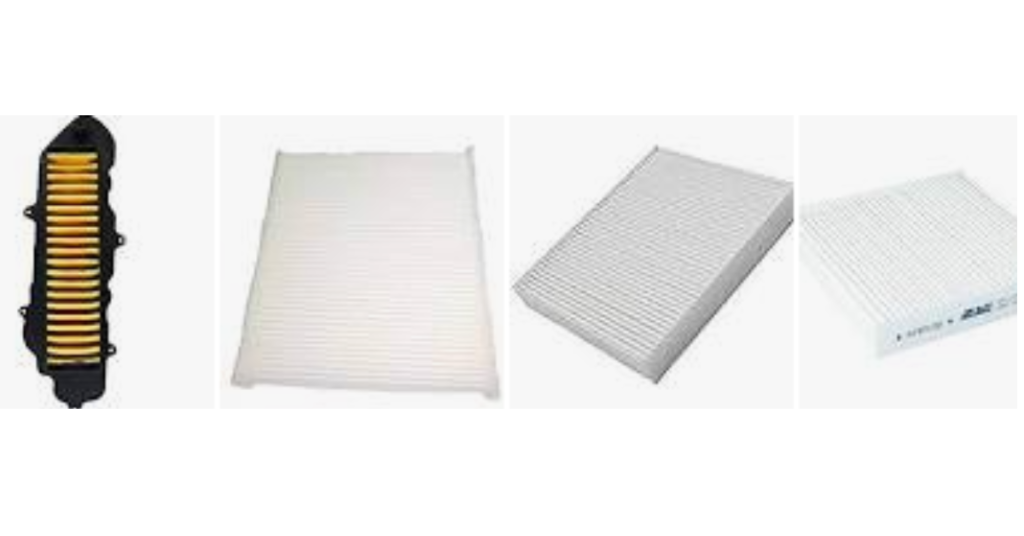
Preparing to Wash an Air Filter
Before you get started, let’s make sure you’re well-prepared for the task of washing your air filter. Gathering the necessary materials and tools is the first step in “How to Wash Your Air Filter”. You’ll need the following items:
- A screwdriver (to open the air filter housing)
- A bucket or basin
- Liquid detergent (mild, non-abrasive)
- A soft brush or cloth
- A hose or access to a sink
Additionally, it’s crucial to observe safety precautions. Make sure your Air Purifier or HVAC system is turned off before you begin and consider wearing gloves to protect your hands from dirt and cleaning solutions. Now, let’s go ahead and remove the air filter from its housing.
With these preparations in place, you’re ready to embark on your journey of “How to Wash Your Air Filter”.
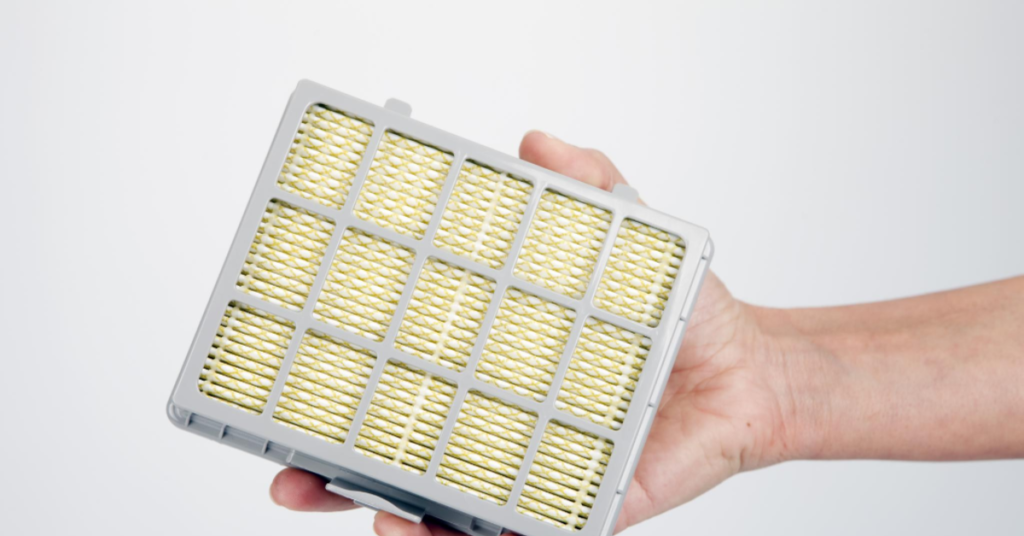
Identifying the Type of Air Filter
Before you can start cleaning your air filter, it’s essential to know its type. Understanding whether you have a disposable or washable filter will determine the cleaning process you should follow. Let’s take a closer look at how to differentiate between these two types.
| Type | Characteristics | Cleaning Method |
|---|---|---|
| 1. Disposable Air Filters | Typically made of paper or pleated material | Replace with a new filter |
| 2. Washable Air Filters | Constructed from washable materials (e.g., foam or mesh) | Regularly clean with water and mild detergent |
Inspect your air filter or refer to the manufacturer’s label for guidance on its type. Once you’ve determined whether you have a disposable or washable filter, you can proceed to the appropriate cleaning method. In the following sections, we’ll provide step-by-step instructions for cleaning both types, ensuring you get the most out of your air filter.
Cleaning a Washable Air Filter : How to Wash Your Air Filter steps
This step is main part of “How to Wash Your Air Filter”. Cleaning a washable air filter is a straightforward process that can extend the filter’s lifespan and maintain its efficiency. If you’ve identified your air filter as washable, follow these steps to clean it effectively:
- Dusting off Loose Debris: Start by removing the air filter from its housing. Use a soft brush or cloth to gently dust off any loose debris and surface particles. Be thorough but gentle to avoid damaging the filter material.
- Rinsing with Water: Take the filter outside and rinse it with a gentle stream of water, either from a hose or a sink. The water flow should be in the opposite direction of the airflow (from clean side to dirty side). This will dislodge and wash away finer particles.
- Using a Mild Detergent Solution: Fill a bucket or basin with water and add a small amount of mild liquid detergent. Submerge the filter and gently agitate it to create a soapy solution. Allow it to soak for a few minutes.
| Steps | Description |
|---|---|
| 1 | Dust off loose debris using a soft brush or cloth. |
| 2 | Rinse the filter with water in the opposite airflow direction. |
| 3 | Soak the filter in a mild detergent solution. |
Once the filter has soaked, rinse it again with clean water to remove any detergent residue. Be sure to rinse thoroughly to ensure no soap is left behind. After rinsing, allow the filter to dry completely before reinstalling it. This process will help maintain clean and efficient air filtration.
If air filter as disposable, the cleaning process is a bit different since disposable filters are not meant to be washed and reused. Here’s what you should do when you have a disposable air filter:
- Disposing of a Dirty Filter Responsibly: Carefully remove the dirty disposable air filter from its housing. It’s essential to dispose of it properly. Check your local regulations for guidelines on disposing of filters since some areas may require special disposal methods.
- Replacing It with a New One: Purchase a replacement filter of the same type and size. Ensure that the new filter is compatible with your Air Purifier or HVAC system. Follow the manufacturer’s recommendations for installation, which are often printed on the packaging.
- Considerations for Upgrading to a Washable Filter: If you’re looking to reduce waste and save money in the long run, consider switching to a washable air filter. These filters can be used for several years with proper care and are a more eco-friendly choice.
| Steps | Description |
|---|---|
| 1 | Dispose of the dirty disposable filter properly. |
| 2 | Replace it with a new filter of the same type and size. |
| 3 | Consider switching to a washable air filter for long-term savings and eco-friendliness. |
While disposable filters are convenient because they don’t require cleaning, keep in mind the environmental impact of repeatedly discarding them. Washable filters offer a more sustainable alternative, and we’ll explore these further in the next section.
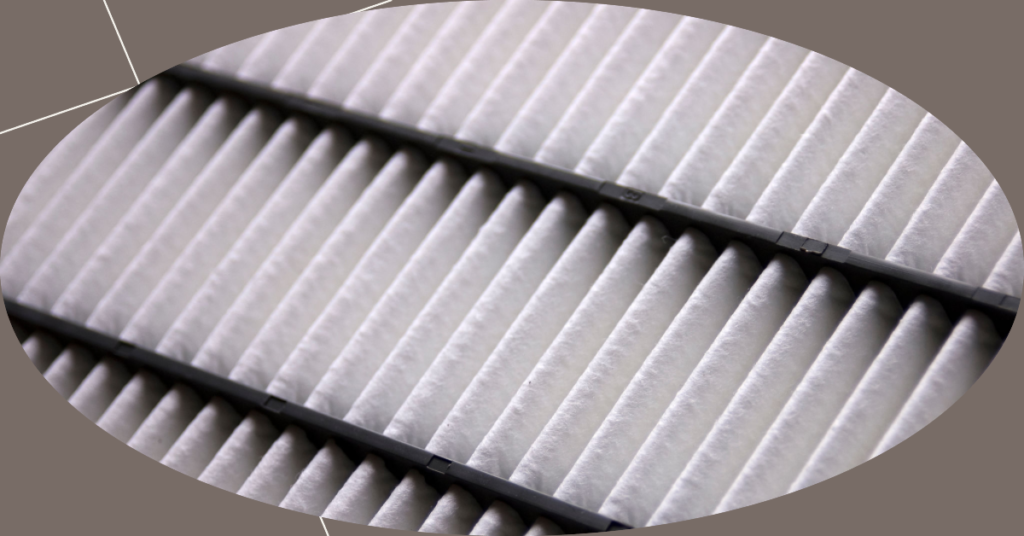
Frequency of Air Filter Cleaning
Now that you’ve learned how to clean both washable and disposable air filters let’s discuss how often you should perform this maintenance task. In this guide on “How to Wash Your Air Filter” the frequency of cleaning your air filter depends on various factors, but there are general guidelines to follow:
- General Guidelines for Washing Air Filters: It’s recommended to clean washable filters every 1-3 months, depending on the level of airborne particles in your home. Disposable filters should be replaced every 1-3 months as well, but this can vary based on the filter’s MERV rating (Minimum Efficiency Reporting Value).
- Factors Influencing Cleaning Frequency: Factors such as pet hair, tobacco smoke, or living in an area with high pollution can clog filters faster. In such cases, you might need to clean or replace your filter more frequently to maintain optimal performance.
- Creating a Maintenance Schedule: To ensure you don’t forget to clean or replace your air filter, create a maintenance schedule or set reminders. This way, you’ll stay on top of air filter upkeep and enjoy the associated benefits.
| Guidelines | Description |
|---|---|
| 1 | Washable filters: Clean every 1-3 months. Disposable filters: Replace every 1-3 months (varies based on MERV rating). |
| 2 | Consider factors like pet hair, tobacco smoke, and pollution levels when determining cleaning frequency. |
| 3 | Create a maintenance schedule or set reminders to stay consistent with air filter upkeep. |
By adhering to a regular maintenance schedule and considering the specific conditions of your home, you’ll ensure that your air filter continues to perform optimally, providing you with clean and healthy indoor air. Now that you know how to maintain your air filter let’s explore some additional maintenance tips to keep your home’s air quality at its best.
Maintenance Tips
Maintaining clean air filters is just one part of the equation when it comes to ensuring excellent indoor air quality. Here are some additional maintenance tips that can complement your air filter cleaning routine:
- Using a Vacuum Cleaner Attachment for Dusting: Dust and vacuum the surrounding area of your air filter housing regularly. Utilize a vacuum cleaner attachment to ensure you capture all the loose particles that might end up in the filter.
- Keeping the Surrounding Area Clean: A clean environment helps reduce the load on your air filter. Regularly dust and clean your living spaces to minimize the number of particles that enter the Air Purifier or HVAC system
- Monitoring Air Filter Condition: Even if it’s not time for a scheduled cleaning, periodically inspect your air filter. If you notice it’s become visibly dirty or clogged, it’s a good idea to clean or replace it to maintain optimal performance.
| Tips | Description |
|---|---|
| 1 | Use a vacuum cleaner attachment to dust the area around your air filter housing. |
| 2 | Regularly clean and dust your living spaces to reduce particles entering the Air Purifier or HVAC system. |
| 3 | Periodically inspect your air filter’s condition, and clean or replace it if it becomes visibly dirty or clogged. |
Implementing these maintenance tips in conjunction with washing your air filter will ensure your home’s air quality remains high, and your Air Purifier or HVAC system operates efficiently. But what if you encounter common issues or challenges while cleaning or maintaining your air filter? Let’s tackle that in the next section.
Troubleshooting Common Issues
While cleaning your air filter is usually a straightforward process, you may encounter a few common issues or challenges along the way. Here are some troubleshooting tips to address these problems:
- Mold or Mildew Growth on the Filter: If you notice mold or mildew on a washable filter, it’s important to address this issue promptly. Soak the filter in a solution of water and vinegar (about a 50-50 mix) to inhibit mold growth. Rinse thoroughly and allow it to dry completely before reinstalling.
- Odor Problems: If your air filter emits a musty odor, try cleaning it as usual and then sprinkle baking soda lightly on the filter surface before reinstalling. Baking soda can help absorb and neutralize odors in the air.
- Inadequate Cleaning Results: If you find that your air filter isn’t getting clean even after washing, it may be time to consider replacing it. Filters have a finite lifespan, and if they become too clogged or damaged, they won’t effectively filter the air.
| Issues | Solutions |
|---|---|
| Mold or Mildew Growth | Soak in water and vinegar solution to inhibit mold, then rinse and dry. |
| Odor Problems | Clean the filter and sprinkle with baking soda before reinstalling. |
| Inadequate Cleaning Results | Consider replacing the filter if it’s too clogged or damaged. |
By addressing these common issues, you can ensure that your air filter continues to function effectively, providing you with clean, fresh air. But there’s more to consider when it comes to air filter maintenance—the safety and health aspects.
Safety and Health Considerations
While maintaining your air filter, it’s crucial to consider safety and health precautions. After all, the goal is to breathe cleaner air, and that includes ensuring your own well-being throughout the process. Here are some important safety measures:
- Avoiding Exposure to Harmful Particles: When handling dirty air filters, it’s essential to avoid direct contact with the collected particles. Wear gloves and a mask to protect yourself from potential allergens, dust, or contaminants.
- Protective Gear and Measures: In addition to gloves and a mask, consider wearing safety glasses to shield your eyes from debris. Work in a well-ventilated area to minimize inhaling particles during the cleaning process.
- Health Benefits of Clean Air Filters: Remember that maintaining clean air filters contributes to a healthier indoor environment, reducing the risk of allergies, respiratory issues, and other health concerns caused by poor air quality.
| Considerations | Precautions |
|---|---|
| Avoiding Exposure | Wear gloves, a mask, and potentially safety glasses when handling dirty filters. |
| Protective Gear | Work in a well-ventilated area to minimize inhaling particles. |
| Health Benefits | Maintaining clean air filters reduces the risk of allergies and respiratory issues. |
By taking these safety and health considerations into account, you can ensure that your air filter maintenance process is not only effective but also safe for you and your family. Clean air filters lead to cleaner, healthier air in your home, promoting a better quality of life.
Alternatives to Washing Air Filters
While washing air filters is a sustainable and cost-effective way to maintain your indoor air quality, there are alternative options available. These alternatives may suit your needs or preferences, depending on your specific circumstances. Let’s explore a few of them:
- Electrostatic Air Filters: Electrostatic air filters use electrically charged plates to attract and capture particles from the air. They are reusable and efficient, making them an excellent alternative to traditional filters.
- HEPA Filters: High-Efficiency Particulate Air (HEPA) filters are known for their superior filtration capabilities. They can capture extremely tiny particles, making them ideal for those with allergies or respiratory issues.
- UV-C Purifiers: UV-C purifiers use ultraviolet light to kill bacteria, viruses, and mold in the air. While not a direct replacement for filters, they can be used in conjunction with filters to further improve indoor air quality.
| Alternatives | Description |
|---|---|
| Electrostatic Air Filters | Reusable and efficient, using electrically charged plates to capture particles. |
| HEPA Filters | Known for superior filtration, capturing tiny particles, ideal for allergies and respiratory issues. |
| UV-C Purifiers | Use ultraviolet light to kill bacteria, viruses, and mold in the air, enhancing air quality. |
These alternatives offer various benefits and may be suitable for specific situations or preferences. It’s essential to research and choose the option that best fits your needs and budget. Regardless of the choice you make, regularly maintaining and cleaning your air filter is still essential to ensure its optimal performance.
Environmental Impact
As responsible individuals, it’s important to consider the environmental impact of our actions. When it comes to air filters, there are ways to minimize waste and reduce our carbon footprint. Let’s explore how your choices can make a difference:
- Reducing Waste with Washable Filters: By opting for washable filters, you significantly reduce the number of disposable filters that end up in landfills. This is an eco-friendly choice that aligns with sustainable living practices.
- Proper Disposal of Disposable Filters: If you use disposable filters, make an effort to dispose of them according to local regulations. Some areas may have specific disposal guidelines, so be sure to follow them to minimize environmental impact.
| Environmental Considerations | Actions |
|---|---|
| Reducing Waste | Choose washable filters to reduce the number of disposable filters in landfills. |
| Proper Disposal | Follow local disposal regulations for disposable filters to minimize environmental impact. |
Small changes in our choices can have a significant impact on the environment. By making eco-conscious decisions about your air filters, you can contribute to a cleaner planet while enjoying clean air in your home.
Conclusion on “How to Wash Your Air Filter”
In conclusion, knowing How to wash your air filter is a valuable skill for any homeowner. It not only leads to cleaner air but also extends the life of your air filter, improves energy efficiency, and saves you money. Regular maintenance of your air filter is a win-win situation.
By following the outlined steps in “How to Wash Your Air Filter” and considering the alternatives and environmental impact, you can make informed decisions about your air filter maintenance. Remember that safety and health should be a top priority and always follow best practices to ensure a clean and healthy living environment.
Final Thoughts and Recommendations
The journey to cleaner air with “How to Wash Your Air Filter” doesn’t end with a single air filter cleaning. It’s an ongoing process that contributes to the overall well-being of your home and family. Here are some final thoughts and recommendations:
- The Role of Clean Air Filters in a Healthy Home: Clean air filters are your first line of defense against airborne pollutants. They play a vital role in maintaining a healthy living environment, and regular maintenance ensures they perform optimally.
- Encouraging Others to Adopt Air Filter Maintenance Habits: Share your knowledge with friends and family. Encourage them to make air filter maintenance a routine part of their home care. By spreading awareness, you contribute to cleaner air in your community.
- Suggestions for Further Research and Reading: If you’re passionate about indoor air quality and environmental responsibility, consider further research and reading on the topic. There’s always more to learn, and staying informed is a valuable investment in your home’s well-being.
FAQ related to “How to Wash Your Air Filter”
Is it OK to wash an air filter?
It depends on the type of air filter. Some filters, like HEPA filters, are washable, while others are not. Always refer to your air filter’s manual for specific cleaning instructions.
Can I clean my air filter myself?
You can clean some air filters yourself, but not all are designed for cleaning. It’s important to follow the manufacturer’s guidelines for your particular filter to ensure proper maintenance.
Can you wash and reuse air filters?
Some air filters can be washed and reused, while others must be replaced. Check your filter’s instructions to determine if it is washable and suitable for reuse.
Can I clean my air filter with soap and water?
Using soap and water to clean an air filter depends on the filter type. Some washable filters can be cleaned with mild soap and water, but always follow the manufacturer’s recommendations to avoid damage.
How dirty is too dirty for an air filter?
An air filter should be cleaned or replaced when it appears visibly dirty or clogged. A severely dirty filter can hinder its performance and compromise indoor air quality.
What happens if you don’t clean your air filter?
Neglecting to clean or replace your air filter can reduce its efficiency, leading to poor air quality, higher energy consumption, and potentially worsening allergy or respiratory symptoms.
Can you clean an air filter instead of buying a new one?
You can clean some air filters to extend their lifespan, but not all are washable. Refer to the manufacturer’s guidelines for your specific filter to determine whether it can be cleaned or should be replaced.
How do I know if my air filter needs cleaning?
You should clean or replace your air filter when it appears visibly dirty or clogged. Regularly checking and following the manufacturer’s maintenance recommendations will help you know when cleaning is necessary.
DheerajSonwane is a dedicated writer with expertise in air purification technologies. He focuses on providing well-researched content to help readers improve indoor air quality in homes and businesses. As the lead writer at AirPurifierMaster.com, Dheeraj offers practical advice his insightful reviews guide individuals in choosing the best air purifiers for their needs.

